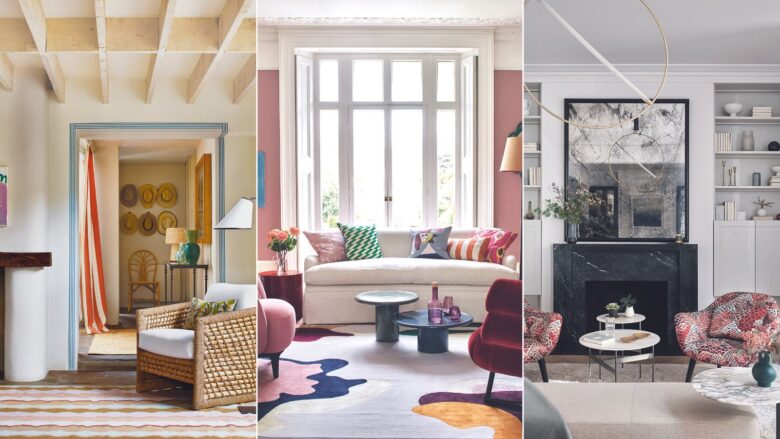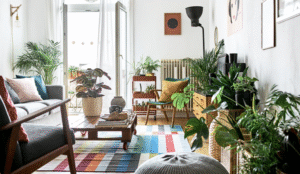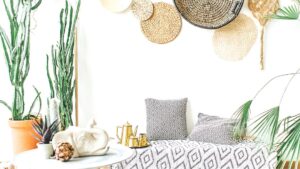Have you ever walked into a room and felt instantly inspired by its atmosphere? Creating a beautiful, welcoming home doesn’t require a designer budget or expensive furniture. With smart planning and creative thinking, you can transform any space into a stylish sanctuary that reflects your personality while staying within your financial means.
This comprehensive guide will show you how to refresh your home décor without breaking the bank. From understanding your budget to finding affordable materials, we’ll explore practical strategies that deliver maximum impact for minimum cost. Whether you’re working with $50 or $500, these ideas will help you create a space you’ll love coming home to.
Understanding Your Budget
Assess Your Financial Situation
Before diving into décor projects, take an honest look at your finances. Review your monthly expenses and identify how much you can realistically allocate to home improvements. Just like the 50/30/20 budgeting rule used in personal finance, consider treating home décor as part of your “wants” category—typically 30% of your after-tax income.
Start by tracking your current spending for a month. This exercise helps you understand where your money goes and identifies potential savings that could fund your décor projects. You might discover that cutting back on dining out for two months could provide enough funds for a complete room makeover.
Set a Realistic Budget
Once you know your available funds, create a specific budget for each room or project. Break down costs into categories: furniture, accessories, lighting, and miscellaneous items. This approach prevents overspending and helps you prioritize the most impactful changes.
A good rule of thumb is to allocate 60% of your budget to major pieces (furniture, lighting), 30% to accessories and textiles, and 10% to unexpected expenses or small finishing touches. This distribution ensures you can create a cohesive look while maintaining flexibility for creative additions.
Affordable Décor Ideas
Thrifting and Upcycling
Thrift stores, estate sales, and online marketplaces offer incredible opportunities to find unique pieces at fraction of retail prices. Look beyond the current appearance of items and envision their potential. A dated wooden dresser can become a stunning statement piece with fresh paint and new hardware.
Upcycling transforms discarded items into functional décor. Old mason jars become stylish storage containers or pendant lights. Wooden pallets can be converted into coffee tables or wall art. These projects not only save money but also add character and personal touches to your space.
DIY Décor Projects
Creating your own décor allows complete customization while keeping costs low. Start with simple projects like painting accent walls, creating gallery walls with personal photos, or sewing custom pillow covers. These tasks require minimal investment in materials but produce significant visual impact.
Consider seasonal DIY projects that can be easily swapped out. Hand-painted canvas art, macramé wall hangings, or ceramic vases cost little to make but add sophistication to any room. YouTube tutorials and crafting blogs provide step-by-step instructions for projects at every skill level.
Smart Shopping Strategies
Timing your purchases strategically can lead to substantial savings. Shop end-of-season sales, clearance events, and holiday promotions. Many retailers offer deep discounts on home goods during January and August when they’re clearing inventory.
Compare prices across multiple platforms before making purchases. Apps like Honey automatically apply coupon codes, while websites like Overstock and Wayfair regularly offer sales on home décor items. Don’t overlook discount stores like HomeGoods or Target’s clearance sections for designer-inspired pieces at affordable prices.
Room-by-Room Décor Tips
Living Room
The living room is often the heart of the home, making it a priority for décor investments. Focus on creating a cohesive color scheme using throw pillows, blankets, and artwork. These items are relatively inexpensive but dramatically impact the room’s overall aesthetic.
Rearrange existing furniture to create better flow and conversation areas. Sometimes a simple furniture repositioning can make a room feel completely new. Add warmth with area rugs, which define spaces and add texture without permanent commitment.
Bedroom
Transform your bedroom into a peaceful retreat with affordable updates. New bedding is one of the most cost-effective ways to change a room’s entire feel. Layer different textures and patterns to create visual interest without buying expensive furniture.
Create a focal point with a DIY headboard using reclaimed wood, fabric, or even removable wallpaper. Add ambient lighting with string lights or table lamps to create a cozy atmosphere. These changes require minimal investment but produce maximum impact on your daily comfort.
Kitchen
Kitchen updates often seem expensive, but small changes can create significant transformations. Replace cabinet hardware with modern options, add peel-and-stick backsplash tiles, or paint cabinets for a fresh new look. These projects cost much less than full renovations but update the space effectively.
Incorporate plants and herbs on windowsills or open shelving. They add life and color while serving practical purposes. Display attractive dishes and glassware as décor elements, turning functional items into design features.
Bathroom
Bathroom décor improvements don’t require major renovations. Update fixtures like towel bars, shower curtains, and mirrors for immediate impact. Add storage solutions that also serve as décor, such as attractive baskets or floating shelves.
Plants thrive in bathroom humidity, making them perfect natural décor elements. Choose low-maintenance varieties like snake plants or pothos that tolerate varying light conditions. Fresh flowers also add luxury touches without ongoing costs.
Incorporating Personal Touches
Displaying Memories
Personal photographs and mementos make spaces feel uniquely yours. Create gallery walls mixing family photos, artwork, and meaningful objects. Use inexpensive frames from discount stores, or create eclectic looks by mixing frame styles and colors.
Display collections creatively rather than hiding them away. Books, vintage cameras, or handmade pottery become interesting décor elements when thoughtfully arranged. These personal touches tell your story and create conversation starters for guests.
Adding Greenery
Plants are affordable décor elements that also improve air quality and mood. Start with low-maintenance varieties like succulents, spider plants, or rubber trees. Many plants can be propagated from cuttings, allowing you to expand your collection without additional costs.
Create visual impact by grouping plants of different heights and textures. Use decorative pots or baskets to tie them into your overall design scheme. Even artificial plants can work if you choose high-quality options and use them sparingly.
Using Art
Art doesn’t have to be expensive to be effective. Create your own artwork using canvas and acrylic paints, or frame beautiful pages from old books or magazines. Photography prints from local artists or online platforms often cost less than mass-produced wall art.
Rotate artwork seasonally to keep spaces feeling fresh. This approach allows you to enjoy different pieces throughout the year without overcrowding walls. Consider creating a print collection that can be mixed and matched in various combinations.
Creating a Mood with Lighting and Color
Lighting
Lighting dramatically affects a room’s ambiance and can be updated affordably. Layer different light sources including overhead lighting, table lamps, and candles to create depth and warmth. Replace standard bulbs with warm-toned LEDs for instant coziness.
String lights aren’t just for holidays—they add magical ambiance to any space. Hang them around mirrors, drape them over headboards, or place them in glass jars for custom lighting fixtures. These affordable options create significant atmospheric changes.
Color
Color has powerful psychological effects on mood and space perception. Paint is one of the most cost-effective ways to transform any room. Choose colors that reflect your personality while considering how they’ll affect the space’s overall feel.
Use the 60-30-10 color rule: 60% dominant neutral color, 30% secondary color, and 10% accent color. This formula creates balanced, professional-looking spaces without requiring design expertise. Test paint colors in different lighting conditions before committing to ensure you love them throughout the day.
Where to Find Inspiration
Online Platforms
Pinterest, Instagram, and design blogs offer endless inspiration for every style and budget. Create boards or save posts that resonate with you, then identify common themes in your preferences. This process helps define your personal style and guides purchasing decisions.
Virtual room design tools allow you to experiment with different layouts and color schemes before making changes. Apps like Canva or Roomstyler let you visualize improvements without physical commitment or expense.
Magazines and Books
Library design magazines and books provide professional inspiration without subscription costs. Study how designers use color, texture, and arrangement to create appealing spaces. Pay attention to budget-friendly tips and DIY projects featured in these publications.
Visit model homes, furniture stores, and design showrooms for hands-on inspiration. While you might not buy everything you see, these visits help you understand how different elements work together and spark ideas for your own space.
Common Mistakes to Avoid
Overspending
It’s easy to get carried away with exciting décor projects, but overspending can create financial stress that overshadows any enjoyment from your improved space. Stick to your predetermined budget and resist impulse purchases that don’t align with your overall plan.
Remember that creating a beautiful home is a process, not a race. You don’t need to complete every project immediately. Spreading purchases over time allows you to find better deals and make more thoughtful decisions about each addition.
Ignoring Functionality
Beautiful décor means nothing if it doesn’t work with your lifestyle. Choose pieces that serve multiple purposes and consider how you actually use each space. A gorgeous but uncomfortable chair won’t improve your daily life, regardless of how it looks.
Consider maintenance requirements when selecting décor items. High-maintenance pieces might look stunning initially but become burdensome over time. Choose items that enhance your life rather than complicate it.
Budget-Friendly Room Refresh Comparison
|
Room |
Low Budget ($50-100) |
Medium Budget ($200-300) |
High Budget ($500+) |
|---|---|---|---|
|
Living Room |
New throw pillows, plants, rearrange furniture |
Area rug, accent lighting, wall art |
New furniture piece, professional paint job |
|
Bedroom |
New bedding, DIY headboard, string lights |
Window treatments, multiple lighting sources |
Complete bedding set, furniture updates |
|
Kitchen |
New hardware, plants, organize display items |
Backsplash tiles, small appliances, storage solutions |
Cabinet painting, countertop updates |
|
Bathroom |
New shower curtain, towels, mirror |
Lighting fixtures, storage baskets, paint |
Vanity updates, tile work, complete refresh |
Frequently Asked Questions
Q: How can I decorate my home on a very tight budget?
A: Focus on free or extremely low-cost changes first. Rearrange existing furniture, deep clean everything, and declutter to create a fresh foundation. Use items you already own in new ways—books as décor, scarves as table runners, or dishes as art displays. Shop your own home first, then gradually add small, impactful pieces like plants or DIY artwork.



